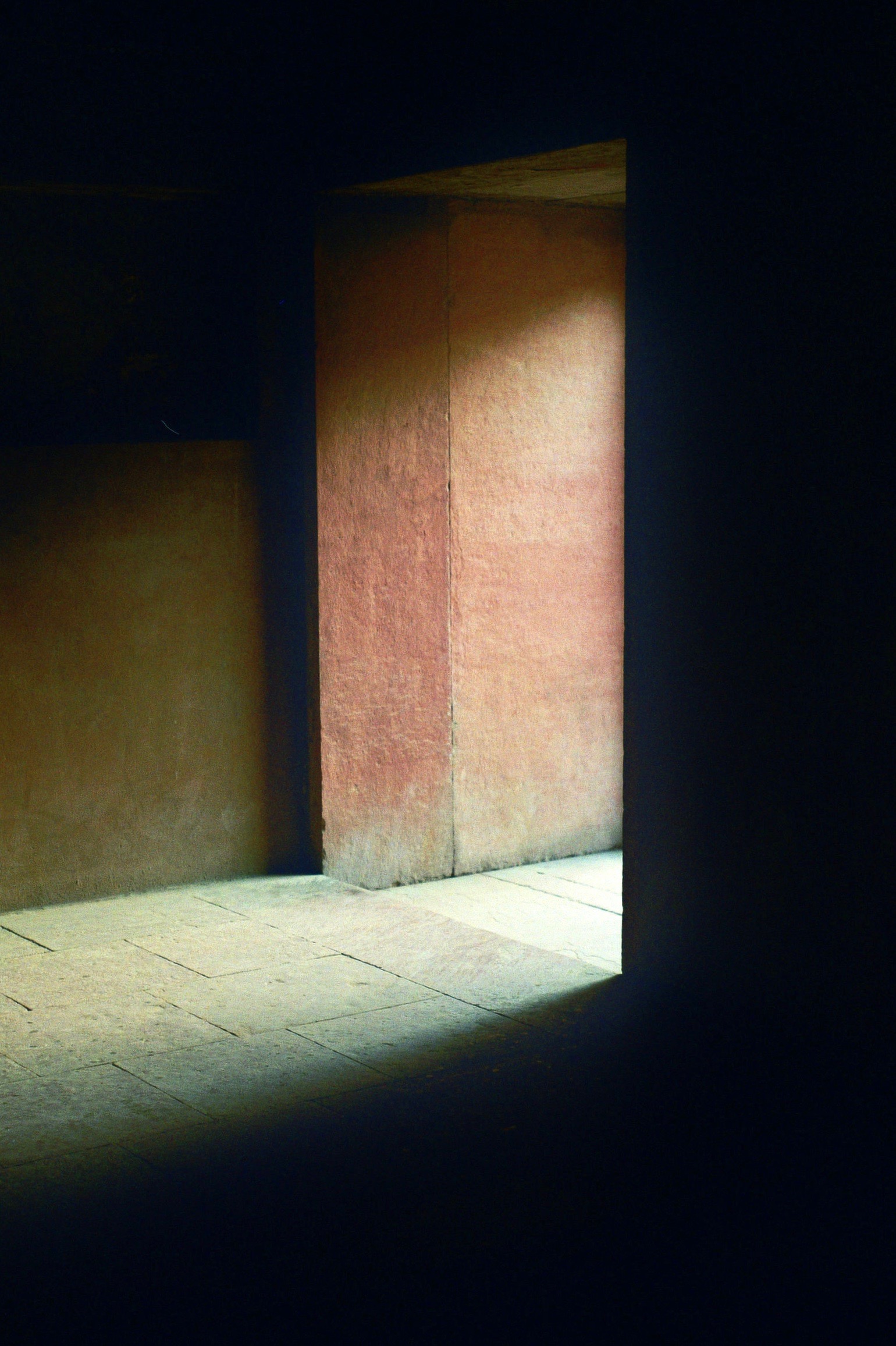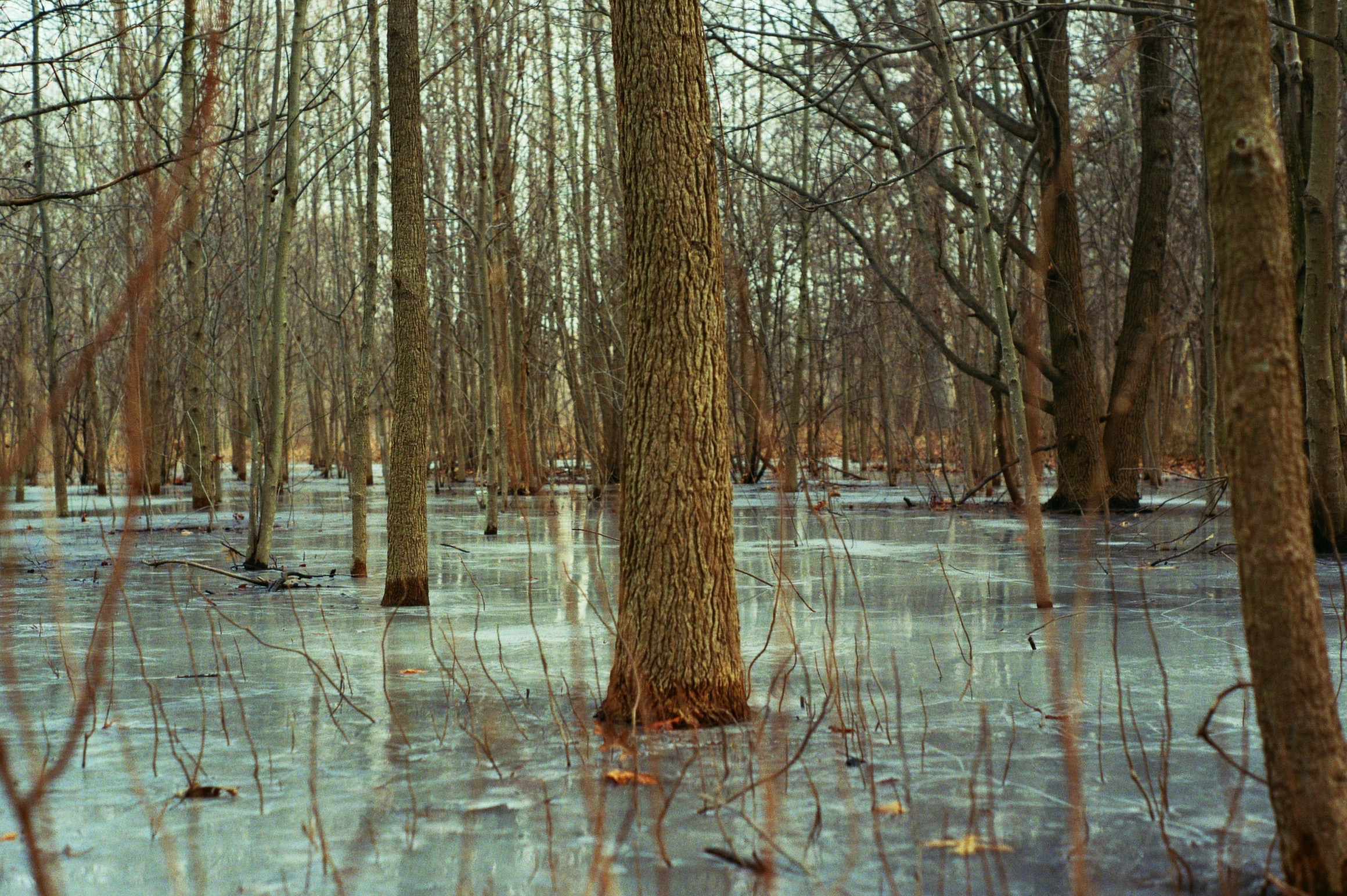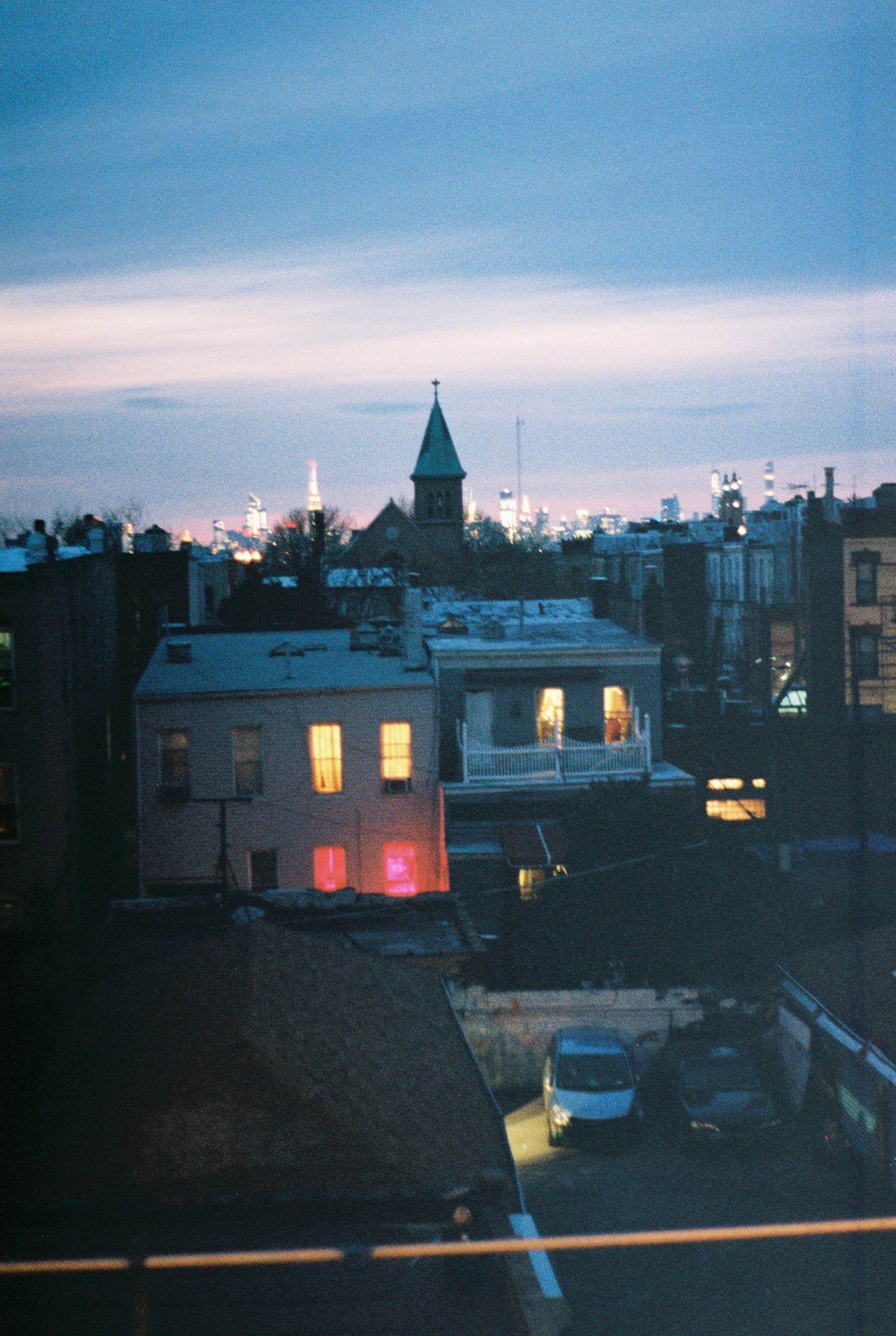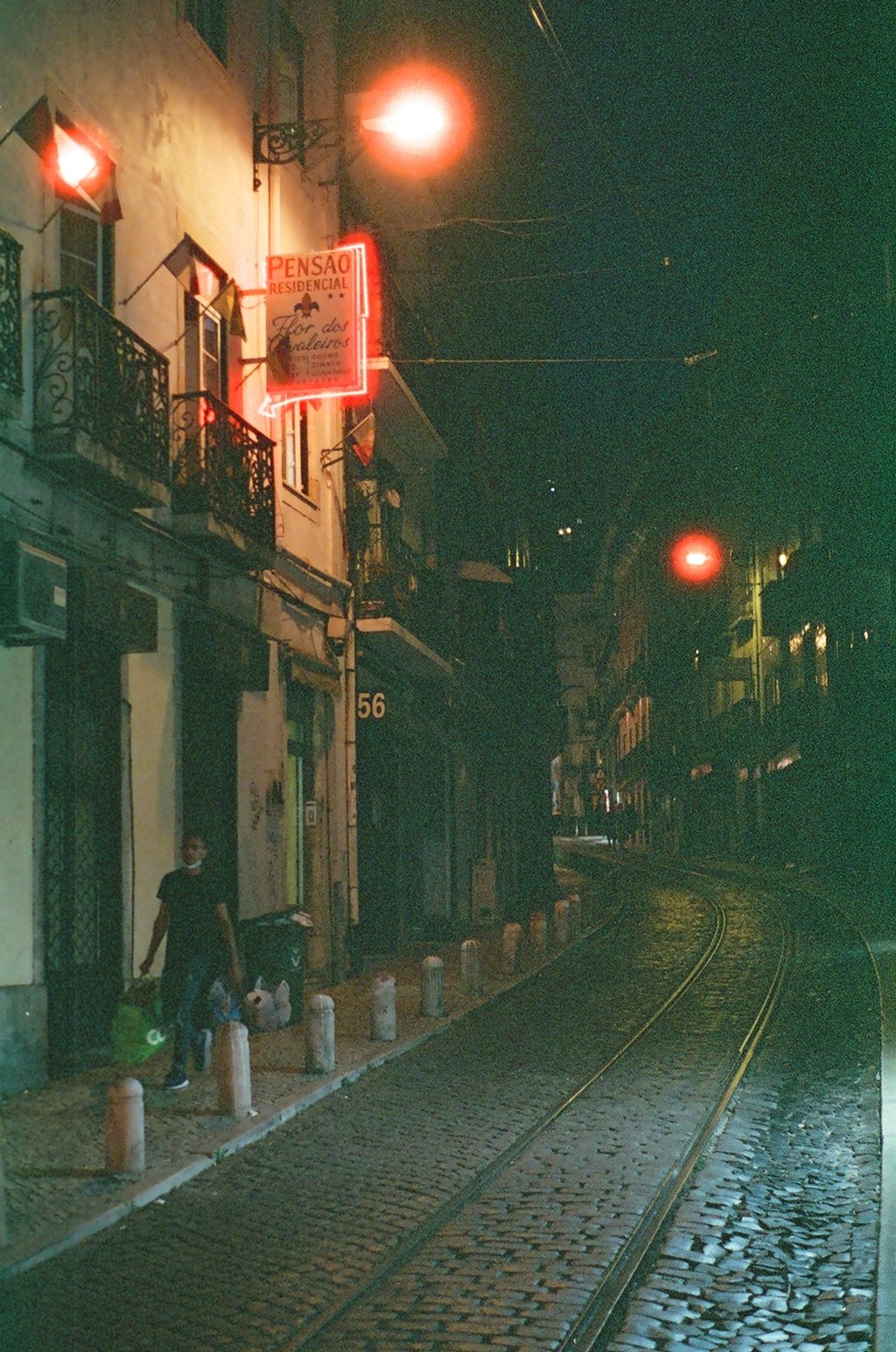INDIA: Part I

“India is the cradle of the human race, the birthplace of human speech, the mother of history, the grandmother of legend and the great-grandmother of tradition” - Mark Twain
India.
A land of…a culture of..the realm of…
…nope.
None of the cut-n-paste written-by-a-20-year-old-bohemian-pansexual-in-Bushwick-moonlighting-as-a-barista-apprentice taglines you’ll find on Lonely Planet will cut it for India. No run-of-the-mill diction nor “off-the-beaten-path” bullsh** will suffice for a place so deep that it transcends the definition of the word “place” itself.
India is not a “place”.
India is a State of Being.
And ask anyone who’s been there and they’ll all agree on one thing.
India,
is incomparable.
To be there is to feel an emotion that has existed within you for eternity yet never risen to the surface; where the Unmanifest becomes the Manifested. India is a key that unlocks a door into your heart and mind you didn’t even know was there.
The best analogy for this divine, emotive, and gorgeously overwhelming experience lies in Apple founder Steve Job’s recollection of the impact taking lysergic acid (LSD) had on his life (a man who regularly pointed to his time spent in India and exploring Hindu philosophy as the guiding event of his life to come):
“Taking LSD was a profound experience, one of the most important things in my life. LSD shows you that there’s another side to the coin, and you can’t remember it when it wears off, but you know it. It reinforced my sense of what was important—creating great things instead of making money, putting things back into the stream of history and of human consciousness as much as I could.”
India, substances or not, elicits the same paradigm shift in understanding of what it means to be a human being, both in one’s relation to other human beings and the World, and Universe, the animate and inanimate, everything. Such is the profundity of the moment after I landed and took off in a mini cab out into the thick, tepid abyss of my first night in Delhi. That experience I promise to fail my way through explaining here in a moment, but first, a needed step back, for those who thought you were off the hook with the grandiose language with which I’ll set my dusty Indian stage.
It must be emphasized that this is the land of the oldest religions in the world, a place where the spirituality is palpable the second you step off the plane. I don’t care if you’re a Lutheran, a Jew, a Muslim, a Quaker, a Sikh, a Transcendentalist, a diehard atheist or a storied Jedi Knight:
You will feel It when you step off the plane. IT, with a capital I.
That Which IS. The Source. The Eternal Godhead. The Inner Light. Ultimate Reality. The Dharma. Prana. Buddha Nature. The Force. God.
BRAHMAN.
Whatever you call the Nameless behind the Named, India is without question a wellspring from which this aforementioned Suchness pours its light into the world. The experience of such a place is by definition beyond the limitations of language and must be lived and felt and touched and tasted and smelled to be known. It is an Essence, like that of New York City, that for me yields an immediate experience of pantheism in the raw the way Emerson and Thoreau felt their Transcendalist inclinations arise from the Concord and Merrimack Rivers (the two most notable figures in America’s first uniquely American philosophical system, a perspective not coincidentally rooted in Vedantic thought from India’s famed spiritual works, the Bhagavad Gita and Upanishads). With that most necessary disclaimer in mind, I’ll labor as best I can to weave some semblance of India into this article.
We ventured through eight vastly different areas, the likes of which I’ll be covering in two (maybe three? Hell if I know…I don’t do outlines because the Grateful Dead didn’t do setlists so we have substantial evidence that planning your art is unwarranted) parts given both the breadth of description required to do so and the sheer number of photos taken that I’d feel criminal omitting (let’s be clear here, I’m not implying they’re any good, but rather that India is so spectacular that its radiance will pervade through and beyond the inborn limitations of any device, especially those devices with which I of all people have been recklessly entrusted).
The journey was a haphazard one with several legs of backtracking, hiccups too grand to be called “hiccups”…let’s just say “life challenges”, logistical nightmares and of course, bouts of stomach illness of such severity that scenes from Walking Dead could be appropriately referenced for additional inquiry into the nature of said experiences (if you ever want to lose weight, ditch that $12 smoothie from Equinox that’s destroying your marriage and opt for an undercooked chicken curry from Old Delhi…fifty cents after Rupee/Dollar conversion and I can assure you, the weight will just melt right out… sorry, “off”).
The route undertaken (not the plan as just mentioned) was as follows:
New York City > Delhi > Agra > Ranthambore National Park > Jaipur > Udaipur > Mumbai > Goa > Udaipur > Small rural village two hours into the largely empty wilderness of Rajasthan’s desert mountains > Udaipur > Mumbai > Delhi > Vienna, Austria > New York City
Here in Part I, I’ll do my best to capture what it felt like to fly across the entire world to a place I’ve never known.
PART I : DELHI, AGRA
There is something to be said of arriving at a far-off destination in the thick of night. For all but the rarest among us who have been or will be gifted with a trip into orbit, such an experience stands as the closest a mere mortal like myself will ever get to space travel. Sure, it’s a been a hundred years since airplanes were invented by Americans, but intercontinental travel, however ubiquitous it may be, still arouses within me my inner child that dreamt of exploring the galaxies (for those of you who feel we’ve made no other lasting cultural contributions to the world, we also invented rock n’ roll, hip hop, the Reuben sandwich, lasers, skateboarding, air conditioning, baseball, solar power, personal computers , whatever Post Malone is and oh, THE F*****G INTERNET). To travel at several hundreds of miles an hour, starting a day in New York City, spending an afternoon peering down on the green-grassed mountains of the Republic of Georgia and evergreen forests and rocky crags of Afghanistan and the stark desert sands of Uzbekistan, then doze off and arise in the Indian Subcontinent…if that doesn’t blow your mind then go back to watching The Bachelorette and stop reading this article as it’s time for you to just pull out on ever having a fulfilled and meaningful life.
And then, just as we’d given up on tracking time itself and submitted to the enclosure that is a Boeing 777, our inter-cultural transportation module rattled into the tarmac and awoke the cabin to its other-worldly destination.
Our first mission out into the streets of Delhi evoked memories of my engrossment with Heart of Darkness. Though antipodal to the experience of an isolated jungle river, Delhi’s slums, by which and through which we passed, seemed to wrap around us like Congolese vines. The scent of open sewers and burning trash, old men with leathery skin wandering between shacks and smoking beedis (“I don’t smoke, but when I do, I make sure I’m smoking beedis”), monstrous bovine silhouettes stumbling into the streets like the demon-possessed Nago boar God of the 1997 Miyazaki anime classic Princess Mononoke … all interlaced with gorgeous odors of nag champa, kicked-up dust and spices that fill the air in such a way as to convince you that India has always smelled like that and always will.
To use a phrase I’m employed before: it’s a beautiful chaos.
The “beautiful chaos”. Old Delhi, India. Canon 5D Mark II. Fletcher Berryman 2019.
Streets narrower than cars. Old Delhi, India. Canon 5D Mark II. Fletcher Berryman 2019.
Sari shop. Old Delhi, India. Canon 5D Mark II. Fletcher Berryman 2019.
Girls on their way to school. Old Delhi, India. Canon 5D Mark II. Fletcher Berryman 2019.
Old Delhi, India. Canon 5D Mark II. Fletcher Berryman 2019.
Elena. Old Delhi, India. Canon 5D Mark II. Fletcher Berryman 2019.
Old Delhi, India. Canon 5D Mark II. Fletcher Berryman 2019.
Old Delhi, India. Canon 5D Mark II. Fletcher Berryman 2019.
Old Delhi, India. Canon 5D Mark II. Fletcher Berryman 2019.
Old Delhi, India. Canon 5D Mark II. Fletcher Berryman 2019.
Old Delhi, India. Canon 5D Mark II. Fletcher Berryman 2019.
Take my money, I’m sold. Old Delhi, India. Canon 5D Mark II. Fletcher Berryman 2019.
Old Delhi, India. Canon 5D Mark II. Fletcher Berryman 2019.
I fell in love in minutes. I’m tearing up thinking about it now, writing from my misshapen Ikea bed (I can’t help it, I always sleep on the right side closest to my door from a long-stemming belief based on 90’s films featuring Bruce Willis that I need to be ready for on the inevitable intruder) on a rainy Sunday in my nothing-special but beloved apartment hidden away on one of New York City’s 120,000 blocks.
Like a Laker disdainly (< disdainly is not a word, well, now it is, English of course having no governing body to resolve such flagrant claims) respects a Celtic as a worthy opponent, the fledgling New Yorker within saw Delhi as a formidable adversary, no, a comparable friend. And then some….Delhi, dare I say it, makes New York look like a small town in Eastern Kansas in terms of the number of people moving around (which I’ll forever continue to reference in my writing as my favorite “underrated place”…if you’ve ever dissed Kansas you’re probably not spending your free time in the rolling hills of The Sunflower State, in which case…you’re blowing it).
Delhi has over 11 million people, ELEVEN MILLION. And it’s only India’s second-largest city…wait till I stammer my way through describing Mumbai later in this multi-part article. The buildings are largely low and haphazard yet very tightly bunched, evoking a feeling more akin to massive metropolises in Latin America like Bogota or Mexico City than New York…think maybe a NYC / LA hybrid, but larger and again, much more dense in places.
To write an exhaustive story on Delhi would be an impossibility in the same vain as writing an unabridged history of New York City (though the famed and Pulitzer-prize-winning 1999 masterpiece Gotham comes as close as one could ever get). As I always true to do here, I’ll revert to sharing how it felt, rather than what’s there. I’ll cover the following three places, then shut up so we can focus on the photos, though they too may disappoint and inevitably fall short of conveying the spirit of Delhi (which is a good thing, as it requires you to go there rather than visit vicariously through my broken lens and egregious manipulation of English that would have E.B. White and William Strunk Jr. rolling in their graves). Those places are, in chronological order of visitation, The Jama Masjid (in Old Delhi), Old Delhi in general, and the one and only Taj Mahal.
The Jama Masjid:
The Jama Masjid is one of the largest mosques or largest mosque in India, depending on who you ask. Far more importantly to my experience, it was, dare I admit it, the first mosque I’ve ever visited. Though I pride myself on an obsessive side hobby of theological study (not kidding), Islam is the biggest gap in my armchair knowledge of religious studies (I could go on and on for years about the major schools of Buddhism, Christian mysticism [specifically Catholic mystical monasticism and Eastern Orthodox mystical-leaning literature like the Philokalia], the Jains and Sikhs, Shaivism and the Vedanta school of Hinduism, hence the emotion I felt upon learning I’d be traveling to the cradle of Eastern Spirituality).
Why is this the case? Frankly, it’s my own fear. Not fear of Muslims of course (!), but fear of failing miserably in developing an inkling of comprehension of the wide breadth of belief and tradition that fall under the banner of Islam. I’ve since worked hard to change that, with a strong hope of learning more about the faith empirically through interaction with the large Nigerian community nearby my home in Bed-Stuy, Brooklyn (there are many masjid, or mosques, in Bedford-Stuyvesant).
In Delhi, I shed the fear of inevitable scholastic ignorance in favor of feeling the spirit of the faith. I took my shoes off, tied on my white garb and walked barefoot up the red earthen steps of the masjid, feeling the worn brick warm the soles of my ghostly, pre-summer Caucasian feet.
I entered through one of several archways into the main plaza, centered by a pool of water for cleansing (I know not the exact significance but saw pilgrims washing their hands and feet, assumedly for purification before worship).
I felt an immediate, internal peace.
The peace that follows a deep breath. The sense that one’s inner wheels have stopped turning, the pistons no longer firing, the Soul at rest with what simply Is. My mind, a trash truck of tangential nonsense all compacted continuously by the compactor on its way to steam in the dump, experienced the rarity of being overtaken by the physical manifestation of spiritual ideal. The ornate calligraphy that titled the many archways in the main façade, the towers from which the call to prayer is sung, and the hot red Sun of Delhi off in the distance all informed my Being that I’d arrived at a place that was both entirely new and yet intimated familiar. I fell in love with Islam in that moment, without knowing more than a sliver of the entirety of its religious corpus.
Like Mexican culture is better known by eating a torta than reading about what a torta’s ingredients are, Islam, in my naïvete, is better felt that read. As the ignorant American that I am, I can only describe it as…
warm.
Physically and literally warm, yes. The brick retains the energy of the persistent Indian Sun. The mosque is of course outside and airy, never making you feel like you’re removed from the outside world like one may feel in a megachurch.
But emotionally warm too, if not moreso. The many children present had huge smiles and waved ecstatically when my gangly frame noodled its way into the courtyard. The old men and women visiting in prayer approached us with grins that fed into creases in their leathery faces and gestured softly to show us around. Older men just outside the central building kneeled in quiet prayer while the hum of one of the world’s largest cities was somehow held back by an omnipotent force beyond my mind’s eye.
I too, prayed, and sensed a coming home to a place I’d never been before. I’ve always felt that no one religion has a monopoly on the Divine, and rather all are their own beautiful and commensurate vehicles all en route towards total Union within the form and force of Unconditional Love. To enter that stream from a different tributary was a humbling experience that brought me to near-tears (the desert heat held them at bay and avoided embarrassment on Day 2 with our tour group, thank goodness).
Old Delhi:
In the realm of cities New York stands as an obvious nominee for the Center of The Universe. In many ways, both quantifiably and quantitatively, it indeed is (most diverse city on Earth by ethnicity, linguistic diversity and percentage of foreign born residents, also home of the UN, the world’s largest capital markets, fashion, the Naked Cowboy, the Cronut, me…the already compelling list goes on). New York, as I’ve belabored you in nearly every post on this site (and should, I paid good money for my .nyc URL and not just anyone can have one of those, let it be known), is a place that is beyond description and better known in the flesh. It’s simply too chaotic. There’s too much shit flying by at any moment to distill the experience of a “standard” day down into a few paragraphs. It makes you wonder…is there anywhere on Earth crazier?
Yes. Yes there most certainly is.
Old Delhi.
International Headquarters of the Clusterf** Association.
If you have a claustrophobia, Old Delhi is about the only thing worse than someone rolling you up in a foam mattress at a sleepover. If you don’t enjoy the feeling of cows spontaneously arising into existence in front of your tuk-tuk while old men blow cigarette smoke in your face and horns scream at you from types of vehicles you didn’t know exist and alien spices burn your eyes (this is not a Dune reference but it should be), then yeah…
you’ll hate it.
If, on the other hand, you’ve been to the original Disneyland and the Indiana Jones Ride is your favorite ride, then I’ve got the greatest place on Earth for you pinned to a tee.
Old Delhi is a prodigious event more than it is a place. It is the most striking interplay of antiquity and modernity I’ve personally known: ancient hand-carved doors (again, strongly evoking Indiana Jones) lead to places unknown, dark alleys steal away to hidden spice markets and the banners of India’s religions compete for space against ads for teeth whitening, computer science classes and the Amazonian bundles of exposed wire that drape the city like Christmas lights over a place that could care less about Christmas.
Speaking more matter-of-fact-ly , Old Delhi (not Delhi at large, nor New Delhi) is the most condensed urban environment I’ve ever experienced. Given that its pathways far predate the invention of the automobile in age, most passages are a body’s length apart, with some crannies between homes narrower still. Though largely comprised of buildings between two and four stories high, its supreme density makes up for what it lacks in height and gives a NYC-level rush in an otherwise antithetical setting. We rode through it by pedicab and I will swear to you on my mom’s grave and re-reference a comparison I made earlier in this article:
This is the closest that real life will ever bring you to the Indiana Jones Ride at Disneyland in Anaheim.
Done.
What more need I say?
Taj Mahal:
The Taj Mahal. What could I, a naïve, very Western and decidedly undereducated American possibly impart in regards to a place that’s been described from every angle imaginable and to a degree far more impressive than I could ever hope to achieve?
Probably nothing?
I’ll say this, reluctantly.
I didn’t care much for the idea of visiting it at all. I know, I know, this is quite blasphemous. But truth be told, I give a highly finite number of shits about tourist destinations (some imaginary number close to zero). Working in Manhattan exponentializes (<not a word, alert #2) this sentiment tenfold. I’m not too cool (or so I hope), it’s more that I could care less about staring at one particular building/statue/monolith/palace/fort/collection-of-electronic-billboards (what the f*** is up with Times Square being a “must-see”?).
I’m pulled towards the totality, the collective experience of many moving parts working in tandem to produce a given place’s spirit.
Now here’s where I was wrong..
The Taj Mahal is much more than the Taj Mahal.
Damn the photographers of past and present! They only shoot the main building…
We arrived after a peaceful drive through rural Uttar Predesh (that oddly reminded me of California’s Central Valley…imagine if Lord Krishna was born in Fresno instead of Mathura) to find that the Taj Mahal is not a lone mausoleum but rather an entire complex, a sprawling expression of love for the lost imbued into the built environment.
The place will, well, blow your mind.
It’s unreal. It’s intense. It’s massive! The grounds are immaculate, green…stunning. Acres and acres of gardens and complimentary structures precede the Taj itself. The fountains that lead up to it are far lengthier than any photo may convey. It’s size, too, is done disservice in all photos. It’s GIGANTIC. And of most significance to me, nobody ever mentions or captures the fact that the whole thing is perched on the banks of a huge river! Yes, directly behind it runs the Yamuna River, an impressive waterway that drains the Himalayas and empties into none other than the Ganges (casual, casual…these are like Ivy-League-level name drops in the wonderful world of hydrography…actually I just made that up but I stand by my claim of alleged riparian prestige).
So yes, yes you should go. And as I self-critiqued, nothing more I can say will add any more value to that which has come before me.
So what are you waiting for? Stop reading my sub-rate articles and get out there.
Dare I say it….
Namaste.


















